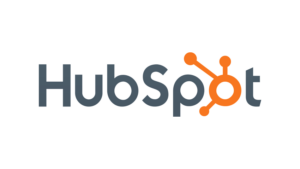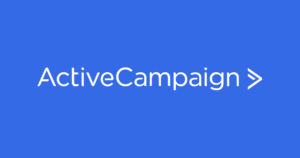Table of Contents

What is google ads cost
When exploring alternatives to Google Ads cost, businesses can consider various platforms and advertising models to diversify their online marketing strategies.
Google Ads cost is a powerful online advertising platform that enables businesses to reach their target audience and drive relevant traffic to their websites. One crucial aspect of running successful Google Ads campaigns is understanding and managing the associated costs. In this guide, we’ll delve into the factors that influence Google Ads cost and provide insights on optimizing your budget for maximum impact.
Factors Influencing Google Ads Cost:
1. Keywords Selection:
The choice of keywords significantly impacts your Google Ads cost. Popular and competitive keywords often have a higher cost per click (CPC) compared to niche or long-tail keywords. Conduct thorough keyword research to strike a balance between relevance and budget.
2. Quality Score:
Google assigns a Quality Score to your ads based on relevance, click-through rate (CTR), and landing page experience. A higher Quality Score can result in lower costs per click. Focus on creating relevant ad content and improving user experience on your landing pages.

3. Ad Placement and Format:
The placement of your ads and the chosen format (text, display, video, etc.) influence costs. Ads displayed at the top of search results or on high-traffic websites may incur higher costs. Experiment with different placements and formats to find the most cost-effective strategy for your business.

4. Geographic Targeting:
Targeting specific geographic locations can impact costs. Advertising in highly competitive regions or countries may require a higher budget. Adjust your targeting settings based on your business goals and budget constraints.
5. Ad Scheduling:
The timing of your ads can affect costs. Consider running ads during peak hours when your target audience is most active. Utilize ad scheduling features to optimize your budget and maximize exposure during high-converting periods.
Optimizing Google Ads Cost:
Regular Monitoring and Adjustments:
Keep a close eye on your campaign performance and adjust your strategy accordingly. Regularly analyze data, identify underperforming keywords or ads, and make necessary adjustments to improve efficiency and reduce costs.
Budget Allocation:
Set realistic daily and monthly budgets based on your business goals. Allocate budget strategically across campaigns and monitor spending to ensure optimal performance without exceeding your financial limits.

Conversion Tracking:
Implement conversion tracking to measure the success of your campaigns. Understanding which keywords and ads lead to conversions allows you to allocate budget more effectively toward high-performing elements.
A/B Testing:
Conduct A/B testing for ad variations to identify the most effective elements. Testing different headlines, ad copy, and images can help refine your strategy and improve ad performance, potentially lowering costs.
The differents alternatives of google ads cost
While Google Ads is a widely used and effective advertising platform, there are several alternative platforms and advertising models that businesses can explore. Each alternative comes with its own cost structure and targeting options. Here are some alternatives to Google Ads cost:
Facebook Ads:
Facebook Ads provides a powerful alternative with a different cost structure. Advertisers on Facebook can choose between a pay-per-click (CPC) or pay-per-impression (CPM) model. The platform allows for highly targeted advertising based on user demographics, interests, and behaviors.

Instagram Ads:
Instagram, owned by Facebook, offers a visually engaging advertising platform. Advertisers can leverage Instagram’s extensive user base and target audiences based on their interests and interactions on the platform. Instagram Ads can be cost-effective with both CPC and CPM options.

LinkedIn Ads:
LinkedIn is a professional networking platform, making it a suitable alternative for B2B advertising. The cost of advertising on LinkedIn is generally higher than some other platforms, but it offers precise targeting options, focusing on professional demographics such as job title, industry, and company size.

Twitter Ads:
Twitter Ads provide an opportunity to reach a broad audience with real-time content. Advertisers can choose between various ad formats and bidding options, including CPC and CPM. Twitter’s targeting capabilities allow advertisers to tailor their campaigns based on interests, keywords, and demographics.

Microsoft Advertising (formerly Bing Ads):
Microsoft Advertising serves ads on the Bing search engine and its partner networks. While it may have a smaller reach compared to Google, it can be a cost-effective alternative. Advertisers can utilize a pay-per-click model, and the platform integrates with Microsoft’s audience targeting features.

Amazon Advertising:
For businesses selling products, Amazon Advertising is a powerful alternative. Advertisers can promote their products directly on the Amazon platform using sponsored product ads, sponsored brand ads, and more. The cost structure includes both CPC and cost-per-acquisition (CPA) models.

YouTube Ads:
YouTube offers a variety of ad formats, including skippable and non-skippable video ads, display ads, and overlay ads. Advertisers can choose between different bidding options, such as cost per view (CPV) or CPC. YouTube’s extensive user base provides opportunities for diverse targeting.

Programmatic Advertising:
- Programmatic advertising involves the use of automated technology to buy and place ads in real-time. Advertisers can leverage programmatic platforms to target specific audiences across a wide range of websites and apps. The cost structure often involves a CPM model.

When considering alternatives to Google Ads, it’s crucial for businesses to assess their target audience, advertising goals, and budget constraints. Each platform offers unique features, targeting options, and cost structures, so choosing the right alternative depends on the specific needs and objectives of the advertising campaign.
Conclusion
Understanding the factors influencing Google Ads cost and implementing strategic optimizations is essential for a successful advertising campaign. By continuously monitoring performance, refining targeting, and experimenting with different elements, businesses can maximize their ROI and achieve cost-effective results on the Google Ads platform.





